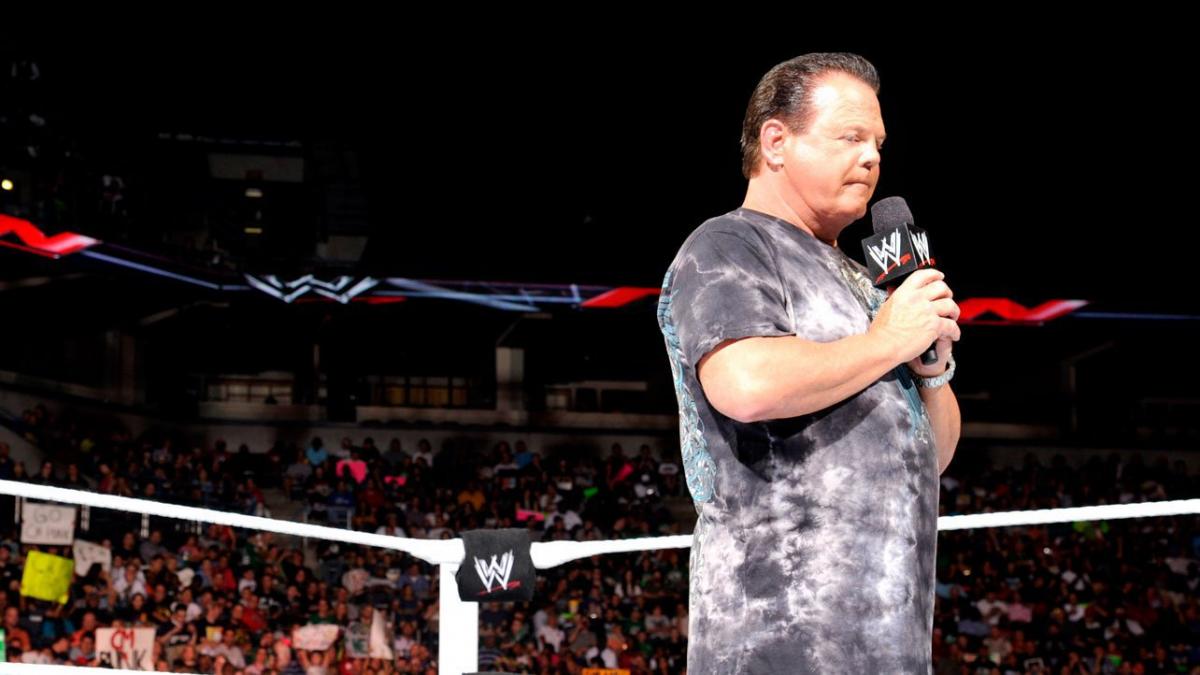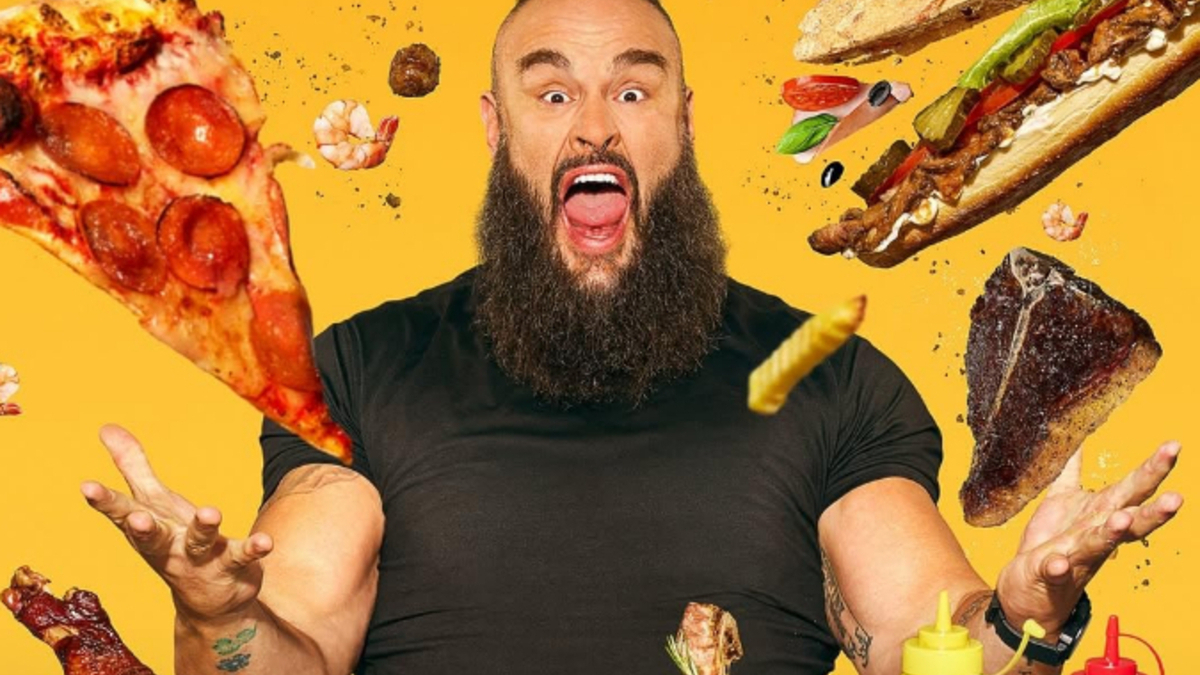Lawler’s storied reign as wrestling’s king explored on DVD set
A 40-year marriage with pro wrestling that’s seen him battle monsters and champions at the Mid-South Coliseum, manhandle comedian Andy Kaufman on national TV, and coin the term “puppies,” among other euphemisms, makes Jerry “The King” Lawler a rich, and overdue, subject for a WWE-produced documentary.
Arriving three years after the King’s near-fatal heart attack, again on national TV, the triple DVD, double Blu-ray set It’s Good To Be the King is anchored by an 80-minute documentary that spotlights Lawler’s rise to fame as Memphis’ beloved King of Wrestling and his subsequent run as a wrestler and commentator for the ‘E.
Segments from the long-running Championship Wrestling program and rarely seen archival photos help paint Lawler as a hometown boy from Memphis turned TV superhero. As for the documentary’s contents, let’s use an analogy that plays off the King’s love of classic rock ‘n’ roll.
When you go to a Rolling Stones concert nowadays, there are two lists you can discuss on the way home — the songs you got to hear and the ones you wanted to, but didn’t. The Stones have been a top-tier act for so long, of course, there isn’t room for everything in a two-hour show.
The WWE doc gives us the Rolling Stones circa 2015 version of Lawler’s lengthy run as a wrestler and commentator. For every career highlight it covers, there are numerous others it skims over or never touches.
The King casually serves as the doc’s narrator while inking drawings of Tojo Yamamoto, Jackie Fargo, Jerry Jarrett and the McMahon Family at his home art studio. We’ve heard Lawler’s cartooning skills mentioned during his employment with WWE, but we seldom get to see how talented he really is.
Lawler tells of how his ring idol, Jackie Fargo, hired him to do some drawings to hang in a Memphis nightspot that Fargo co-owned and how esteemed Memphis announcer Lance Russell showed Lawler’s caricatures of Fargo and other grapplers on TV. Those early forays into the wild world of wrestling led the young Treadwell High School graduate to try his hand in the ring.
Though his never-ending reign as the King of Memphis Wrestling doesn’t receive quite enough back story (for that, see the indy documentary Memphis Heat), most of what’s covered in the doc is important to Lawler’s story as a whole. Russell and wrestling magazine impresario Bill Apter provide comments along with the territory’s one-time co-owner and booker Jerry Jarrett.
We hear briefly from Bill Dundee, but the decades-long rivalry between the King and the Superstar is never discussed. The same goes for Lawler’s feuds with Jimmy Hart and numerous versions of his First Family, though the Mouth of the South is featured in the piece.
When it comes to rivalries, we hear most about the feud with Kaufman. We don’t see the infamous “slap” clip from the Letterman show, but we do get Apter telling a condensed version of how wrestling’s first inroad with Hollywood was forged along with comments from Kaufman’s writing partner Bob Zmuda and girlfriend Lynne Marguiles.
The doc jumps into warp speed when covering the King’s over 20-year run with WWE. We don’t hear about how Memphis was used for years as a farm system where up-and-coming Superstars learned the ropes (with Lawler a bridge between the two promotions), but we are told of how Vince McMahon recruited Jerry Jarrett to run his company in case things went south during the 1992 steroid trail.
It doesn’t take long to reach 2011 and Lawler’s first WrestleMania match against Michael Cole, then 2012 when heart problems caused the King to collapse behind the mic on a live broadcast of Monday Night Raw from Montreal.
Lawler’s son, Brian Christopher, is among those who recount being told of the medical emergency, while somewhat uncomfortable footage of EMTs at work show what went on backstage that night after Lawler was stretchered out of the arena.
Overall, it’s an informative, entertaining piece — especially for those who only know Jerry Lawler as a color commentator. At age 65, the King is able to remember specific, subtle details about things that happened decades ago and his sharp memory adds depth, even to tales we might have heard before. Fans who grew up watching him slay dragons every Saturday morning in Memphis may notice a few key events skipped over and, truthfully, the WWE version of Lawler’s life story could’ve benefited from an additional half hour or so to delve further.
Both the DVD and Blu-ray versions of It’s Good To Be the King are chock full of extra matches and promos, including a few from the old days.
Of particular interest is the infamous Empty Arena Match against Terry Funk. The unconventional bout — which starts with Funk storming into an empty, fully-lit Mid-South Coliseum tossing obscenities like empty beer cans — aired with plenty of bleeps in place on the original TV broadcast.
Surprisingly, WWE features it partly uncensored. The four-letter words remain bleeped, but Funk gets away with calling Lawler a “son of a bitch” repeatedly before finally succumbing to the wrath of a wooden spike ripped from a ringside chair. That outcome made “My eye! My eye!” a soundbite that Funk fans remember — and still quote — to this day.
Other extras include a 1983 Loser Leaves Town Match against Dundee, an early face-off against frequent rival Eddie Gilbert from the short lived Pro Wrestling USA promotion and a match versus Curt Hennig that preceded Lawler’s 1988 AWA title win over the future Mr. Perfect. Why they didn’t include the actual championship bout is anybody’s guess.
With his role in WWF/E being more an antagonistic heel instead of a perennial title holder/contender, the latter-day extras focus on the King’s ability to deliver verbal assaults, as well as physical ones.
We get several King’s Court segments and the ’94 King of the Ring match against Roddy Piper, but little of the weeks-long build up of insults and promos traded by the two veterans.
The WrestleMania 27 bout with Cole, though hardly a technical masterpiece or much of a wrestling match at all, still entertains and is a latter-day example of how Lawler enjoyed feuding with managers, commentators, referees and pretty much any non-wrestler who agreed to get in the ring with him.
The Blu-ray version wins out for fans who want to hear more about the history of Memphis as a wrestling hotbed as it contains additional stories told by Lawler, as well as a 1982 TV confrontation with Ric Flair, who was less than a year into his first reign as NWA World Champ.
Even though It’s Good To Be the King is a somewhat abbreviated version of Jerry Lawler’s life in and out of the ring, it serves its purpose as a convenient, one-stop summary of one of pro wrestling’s longest and most varied careers — one that’s surely had enough twists, turns and piledrivers to warrant a second volume.
Georgia’s Mike Andrews is making his long-awaited return to the pages of SLAM! Wrestling. A baby has a way of derailing fun freelance gigs after all. As a kid, Mike thought pulling down your singlet strap and dropping a closed fist from the top rope was a pretty cool way to settle an argument.




